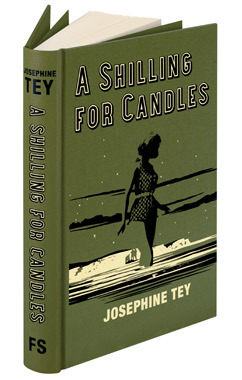What do you think?
Rate this book


256 pages, Hardcover
First published January 1, 1936
And she used to tell a different story each time. When someone pointed out that that wasn’t what she had said last time, she said: ‘But that’s so dull! I’ve thought of a much better one.’
And Hopkins, seeing that Tisdall was unaware of Grant’s identity, rushed in with glad maliciousness. “That is Scotland Yard,” he said. “Inspector Grant. Never had an unsolved crime to his name.” “I hope you write my obituary,” Grant said. “I hope I do!” the journalist said, with fervor.
”’What is it, Jammy? Pyorrhoea?’
‘No. He’s practising to be a dictator. You begin with the expression.’
‘No you don’t," said a third. "You begin with the hair.’
‘And an arm movement. Arms are very important. Look at Napoleon. Never been more than a corporal if he hadn’t thought up that arm-on-chest business. Pregnant, you know.’
‘If it's pregnant Jammy is, he’d better have the idea in the office, not here. I don’t think the child’s going to be a pleasant sight.’”
 , her view on the historically portrayed but not necessarily accurate King Richard III or her more typical mystery
, her view on the historically portrayed but not necessarily accurate King Richard III or her more typical mystery
 )
) is no exception. Another of her wonderfully written stories. This is an entry in a series involving her Detective Alan Grant and concerns a murder off a romantically beautiful and dangerous coast of England of a beautiful woman. As always with Tey, an outline of her plot does not being to do just to her handling of it.
is no exception. Another of her wonderfully written stories. This is an entry in a series involving her Detective Alan Grant and concerns a murder off a romantically beautiful and dangerous coast of England of a beautiful woman. As always with Tey, an outline of her plot does not being to do just to her handling of it."Those women. I think the end of our greatness as a race must be very near. We came through the war well, but perhaps the effort was too great and left us – epileptic. Great shocks do, sometimes." He was silent for a moment, evidently seeing it all again in his mind's eye. "I've seen machine guns turned on troops in the open – in China – and rebelled against the slaughter. But I would have seen that sub-human mass of hysteria riddled this morning with more joy than I can describe to you. Not because it was – Chris, but because they made me ashamed of being human, of belonging to the same species."